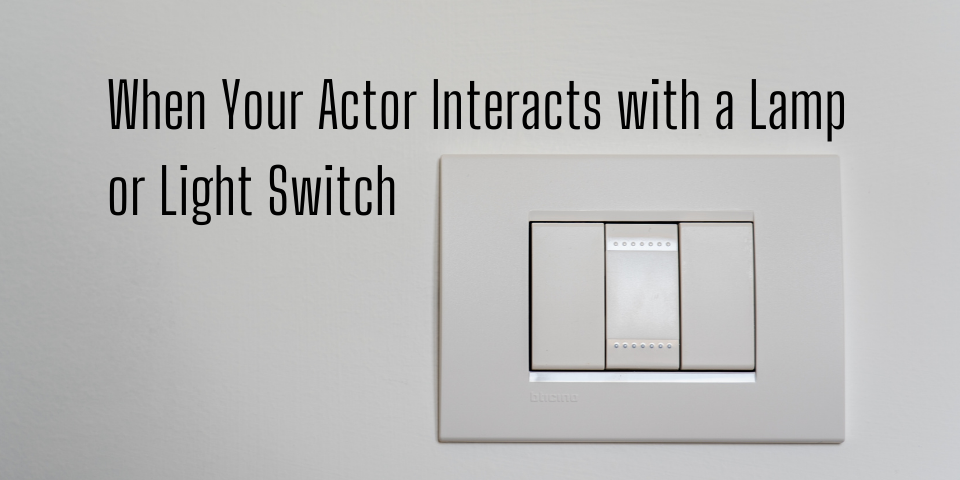From time to time when you are standing in on a TV or film project, your actor’s character will turn on or turn off a light.
For example, your actor may move to switch on a table lamp. Or your actor may turn off an overhead light.
So, when it comes to second-team rehearsals, it may be important for you to know with which kind of light you’ll be interacting in the rehearsal.
In other words, is the light a “practical,” or is the light a “gag”?
Here’s the difference between a practical light and a light gag!
First, Some Definitions
When it comes to lights playing in a scene (as opposed to lighting for a scene), they may be either practicals or light gags.
“Practicals” (practical lamps or lights) are set pieces or props like lamps and other such lights that an actor physically turns on or off. In other words, for practicals, the actor controls whether the light turns on or off.
In contrast, a “light gag” is a set piece or prop like a lamp or other such lighting that an actor appears to turn on or off but does not truly turn on or off. In other words, for a light gag, the actor does not control whether the light turns on or off. Instead, someone else controls whether the light turns on or off. The “gag” is the fakery of a real-seeming light.
Standing in with Practicals
It’s fairly simple when you are standing in with practicals. If your actor turns on or off a light in a scene, you do the same thing: physically turn on or off the light.
If a practical is a set piece, physically turning it on or off in a second-team rehearsal may be important for how the scene is lit.
If the practical is a prop (like flashlight), it may also be important for how the scene is lit — but if there’s any question whether you should turn on or off a practical prop, ask an assistant director or a props person. Props may be fragile, have limited battery life, or have specific settings that if you try to manually turn them on or off, you might risk adding more work to production in the event something goes awry.
Standing in with Light Gags
Light gags are frequently employed when an actor’s character turns on or off a light from a light switch. Often, the light switch playing in the scene will not be a working light switch, and the light will be wired into the lighting system of the studio. Someone off set will actually control when it goes on or off.
During second-team rehearsals, stand-ins should generally try to do any actions their actors do around turning on or off lights. Going through the motion of a light gag — that is, acting like you are turning on or off a light from a light switch — can help the person in control of the light to know when to turn it on or off. Essentially, your doing this helps the person controlling the light to rehearse turning it on or off.
Ask If You Don’t Know
It may be that you’re standing in for an actor in an scene whose character turns on or off a light, but you might not know if the light is a practical or a gag. So, in second-team rehearsal, you don’t know whether to actually turn on or off the light or if, instead, someone else is controlling it and you need to just go through the motions.
Like many other things on set when you’re standing in and don’t know something, if you don’t know whether a light is a practical or a gag, … just ask!
Have you stood in and dealt with practicals and light gags? How do you handle them? Do you have any funny stories interacting with a light in second-team rehearsals? Share your perspectives in the comments box below!







Leave A Comment